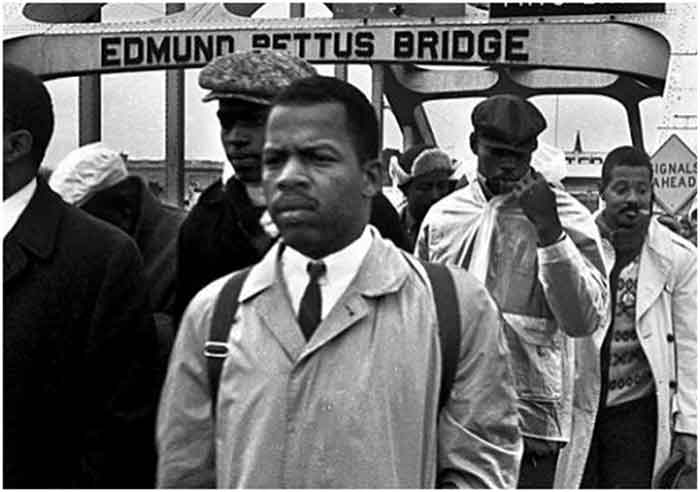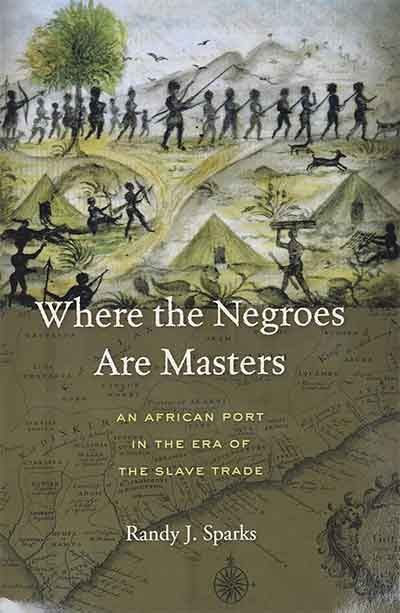
Today is the first anniversary of the loss of John Lewis, a civil rights crusader. At the time of his death, Lewis was one of the last Selma-era civil rights leaders. In 1965, Selma, Alabama became a battle ground in an effort to guarantee Blacks the right to vote. During that time, a system of racial apartheid was in the process of being dismantled in the American south, a citadel of segregation especially in places like Selma and Birmingham. The obvious question that comes to mind is how far the race relations in America have come since Lewis had participated in the Selma, Alabama Bloody Sunday March in 1965? Even after more than a half century, in many cases the race relations issues remain unsolved, and that we all had witnessed last year with the murder of George Floyd by a white police officer named Derek Chauvin. The killing of Floyd led to nationwide protests, and the reckoning over racial injustice which had touched every aspect of our lives. The protests organized by the Black Lives Matter movement eerily resemble the civil rights era photos. Nowhere was it more evident than the commemoration of the 50th anniversary of the Selma March that took place in 2015. To commemorate the event, President Obama, with first lady Michelle Obama went to Selma, Alabama, and stood on the Edmund Pettus Bridge where Martin Luther King Jr had stood fifty-six years ago (January 1965.) Another very important guest on his team was Congressman John Lewis from Alabama, who President Obama introduced as one of his heroes. Fifty-six years ago, a 25-year-old Lewis, a theology student in Alabama led the ‘mighty Selma march,’ along with another organizer, Reverend Hosea Williams. Standing on the bridge, Obama delivered one of his most poignant and emotional speeches of his presidency. This speech had hit home for millions of American men and women, whose predecessors endured inconceivable prejudice and segregation for demanding their basic rights as Americans, like the right to vote.
Selma March had shown an “evolution of change while beaming a spotlight on the stunted growth of that which has not changed” in America. In his speech, Obama focused on these incidents but reminded the Americans that these are not isolated events and America is nowhere near done solving its race relation problems. He emphasized that racism in today’s America goes against the civil rights movement and its ideology. He wanted the everyday Americans to draw strength from the Selma March and talked about America’s collective gain in solving race problem.
In 2011, as an acknowledgement to his struggle for fighting racial injustice, and for his non-violent approach during the civil rights movement, president Obama had adorned John Lewis with the Medal of Freedom on the eve of Freedom Riders 50th anniversary – the highest honor conferred on a civilian by an American president.
During the Selma March, Lewis and his fellow 600 marchers were not asking for anything special – only “equal treatment promised to them a century ago.” The marchers had decided to march the 54-mile long trek from Selma to state capital Montgomery, Alabama. The marchers were mainly protesting the death of a young activist named Jimmy Lee Jackson who was shot at close range by the police, when he took shelter in a restaurant. They were also protesting the denial of their voting rights. They wanted to take the complaint directly to the Alabama governor to demand action. The protesters all gathered at the Brown Church in Selma.
Lewis, a follower of Martin Luther King, Jr in his movement against segregation, equal voting rights and equal opportunity for the African-American men and women is someone who had fought against segregation throughout his life, and had shown America how to stand up to injustice in a peaceful, non-violent Gandhian way. He/They had demonstrated that through “non-violence change is possible.”
The Selma March movement was brought on screen with the release of the film titled ‘Selma’ in January 2015 directed by Ava Duvernay. The movie was a ‘spine-chilling’ reminder of what had happened in Selma, Alabama fifty years ago. It was a box office hit, and was nominated in the best picture category to win an Oscar. It won an Oscar only for the best original song called ‘Glory.’ In the film, actor David Oyelowo played the role of Dr Martin Luther King Jr, and Stephan James had portrayed Lewis. Watching and rewatching them play the iconic figures of the civil rights movement is quite a revelation. Selma was primarily made for the new generation of Americans to have a glimpse of the ‘Bloody Sunday’ 56 years ago. For them it was a pivotal lesson in American history since in many schools the curriculum doesn’t cover race relations. From watching the film the younger generation had a fresh course in history to assess whether the dark days of the past has somewhat lessened, and perhaps will not be repeated.
During the past half-century, great reverence was bestowed on MLK. But the movie takes a different approach and breaks the stereotypical image of Martin Luther King and shows him in his full human elements. We saw a Dr. King who had humor, show his frustrations as he seemed exhausted and weary from the weight of the civil rights movement. The movie also portrays his human weaknesses, and his inability to balance his calling and how that had hugely impacted him on a very personal level.
Dr. King had led the first march from an Alabama church towards Selma. They had to stop near the middle of the bridge once guns were raised to fire on the marchers. To everyone’s surprise, King knelt down, and prayed. Hundreds in the crowd followed, and then dispersed. They had come to protest the injustice.
The second march took place on March 7, 1965. Unfortunately, King had to stay back with Coretta due to safety concerns. John Lewis led the march. When the marchers came near the Edmund Pettus Bridge, the state troopers were again waiting for them with hundreds of spectators. They were ordered by the irate troopers to go back home or face the consequences. Anticipating danger, the protesters started to walk in a single file to avoid clash with the state police. Seeing their refusal, the police released tear gas; several activists including John Lewis and organizer Amelia Boynton were beaten and dragged. The marchers continued on despite the police intervention. The whole scene was televised live on national television. The march was not ineffectual; it was rather a resounding success.
The movement had brought out various interpersonal dynamics between Dr. King and his followers in Alabama during that tension filled time. It had also caused a lot of friction with his wife Coretta King who was an integral part in his life, and shared his vision for the African Americans getting voting rights. Coretta had been getting regular death threats while King was away for months working to make the movement a success in procuring voting rights for the African Americans. She was mostly home alone taking care of their four children and providing King emotional support when he came home for quick visits.
There is one heartbreaking scene in the movie after Luther King got arrested for going on with the first Selma march. This had landed him in jail with some of his biggest followers in his fight to ensure equal rights for the African Americans. Coretta King came in the jail to visit MLK where he breaks down and told her that he was very, very tired from the bulk of the movement on his shoulder. Coretta advised him to stay strong and to get some rest before court appearance the next day. During those trying times we saw Martin Luther King as “a complex flawed man whose faith in God kept him from utter despair.”
The role of President Lyndon B Johnson was portrayed in the movie as that of a difficult man who did not quite see eye to eye with Dr. King. Johnson had other priorities, and passing the Voting Rights Act was not on the top of his to-do things list. Instead, he advised Dr. King to go back to ‘his people’, and keep them calm for now. King refused, and said, “No, Mr. President, the time is now.” It was due to the unwavering determination of Dr. King that Johnson went along with this legislation. Obama in his speech made several references to this legislation that has come under heavy scrutiny in recent years. In his speech, Johnson called the events in Selma “a turning point in man’s unending search for freedom.”
But we have to question whether the march undertaken on the Edmund Pettus Bridge over 5 decades ago paved the way for African Americans to share in the American dream in a more substantive way. The movement culminated from the changes initiated by Lincoln a hundred years ago, followed by bold actions by F D Roosevelt, then Johnson. The incident in Selma precipitated the passage of Voting Rights Act by President Johnson for the African Americans in 1965. But the incidents of police brutality, especially since 2015 onwards lead us to differ from that notion. The deaths of Michael Brown and Eric Gardner in New York, both at the hands of police officers had been the spur for national introspection and protest. They both were unarmed and were shot dead for petty theft. The killing of Freddie Grey in Baltimore, Maryland by white cops is simply unforgettable. Nationwide protests of these horrible shooting incidents had further divided an already divided nation. There had been hundreds of opinion columns written, talk shows on television and live radio shows have dominated the topic of America’s race relations since the George Floyd murder in 2020. Subsequently, the American collective psyche has been grappling questions of race relations, divisiveness between blacks and law enforcement officers, justice, and equality. Many are pondering how to unite so that further protests do not deepen the divide in the US because of race. The trial of Derek Chauvin and his guilty verdict came as rare rebuke by the criminal justice system against a white police officer. He was sentenced to 22.5 years in jail. But one single conviction does not change the fact that the race problem in America has been an uphill battle since the Selma March, and even before.
Selma played a significant role in defining John Lewis’s life. In 1965, by participating in the march he helped in changing American history. From then on Lewis was a link binding the past history of protests to the present. Two months before his death, John Lewis returned to the Edmund Pettus Bridge. “Go out there,” he told his supporters in his raspy voice. “Speak up, speak out! Get in the way, get in good trouble! Necessary trouble! And help redeem the soul of America.” In death, John Lewis had returned to Selma, Alabama as his casket was brought to the Edmund Pettus Bridge as a final tribute to this great man. The symbolic gesture was to pass on the torch to a new generation of Americans to carry on a March forward for racial equality. Otherwise, the bloodshed in Selma would be for nothing.
Zeenat Khan writes from Maryland, USA

















































